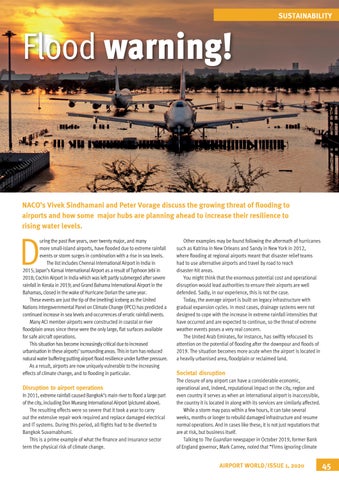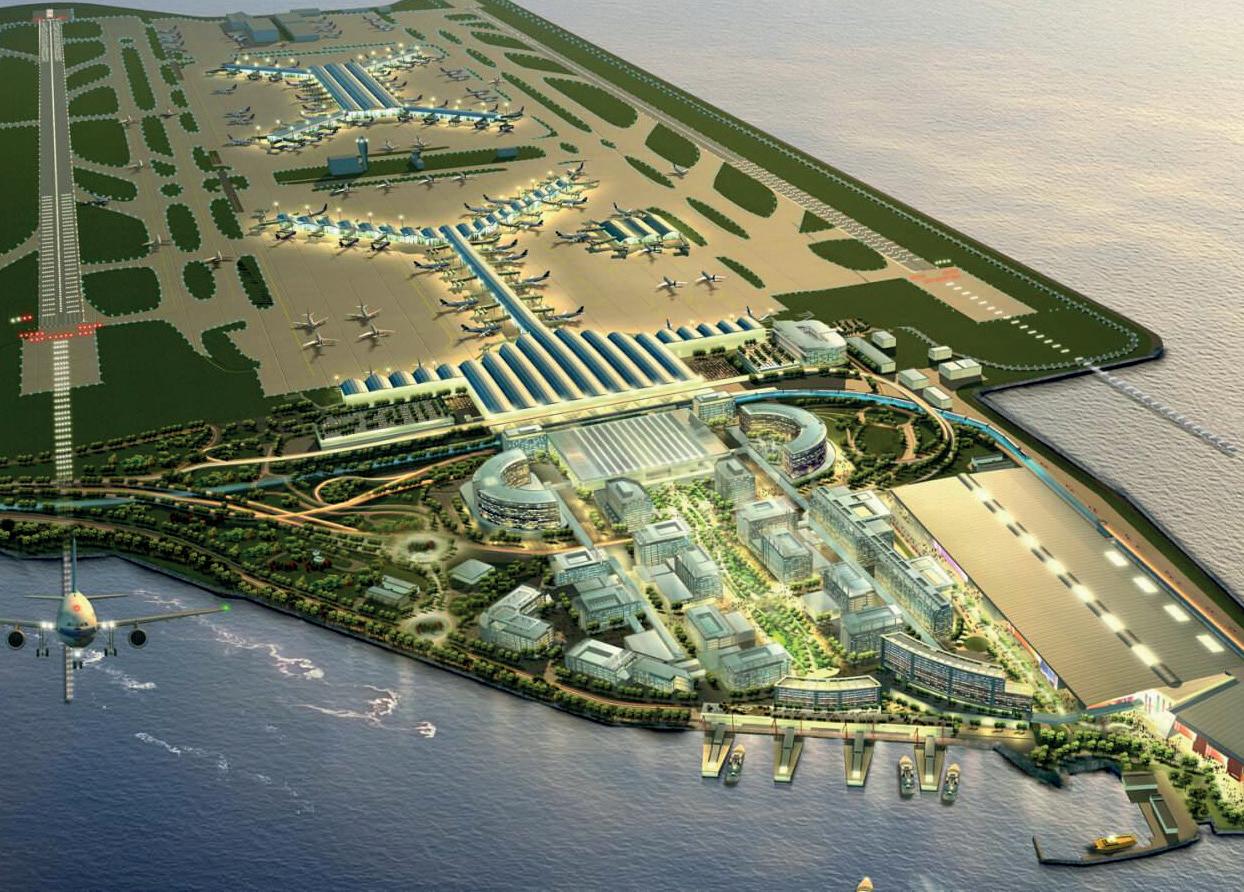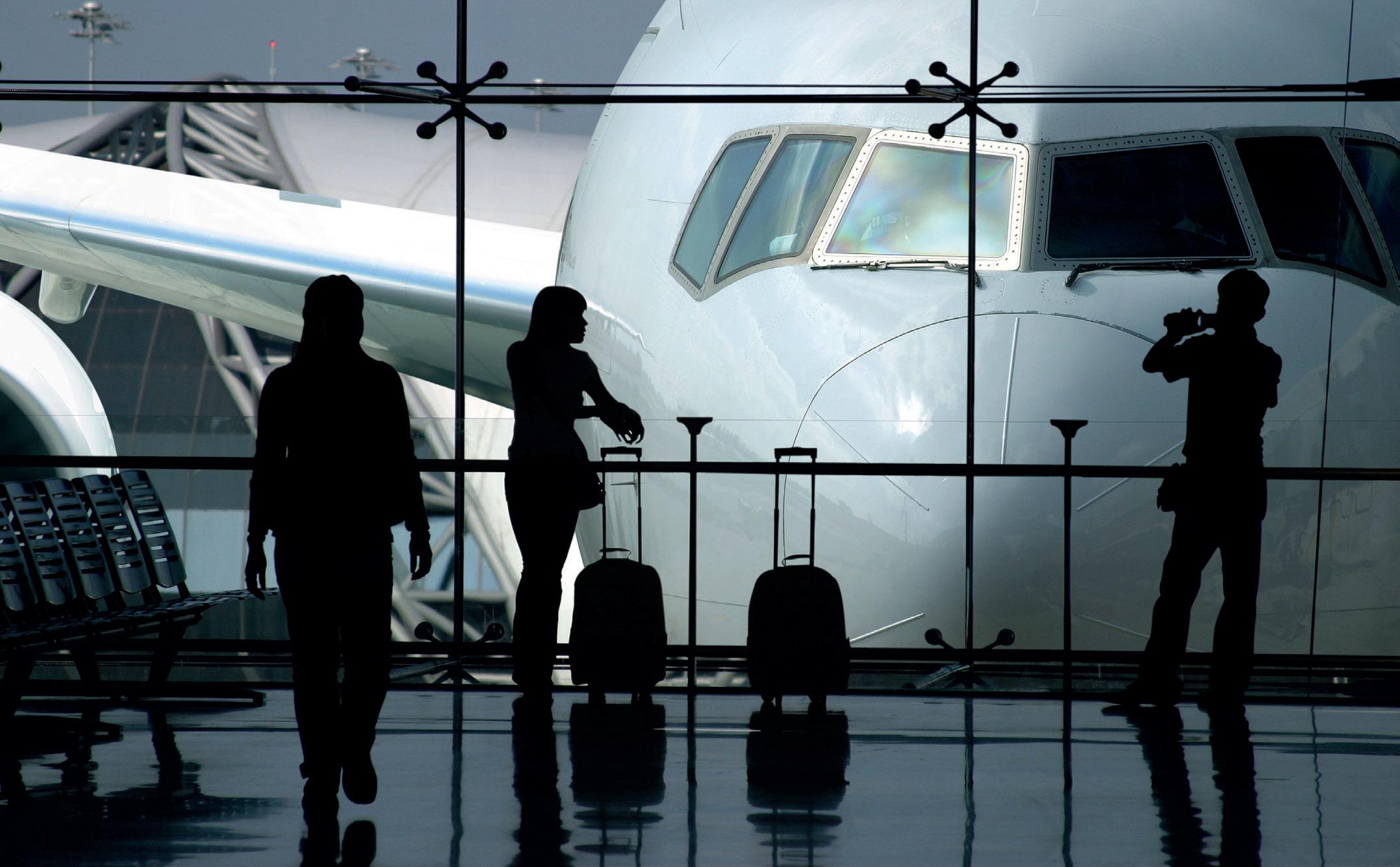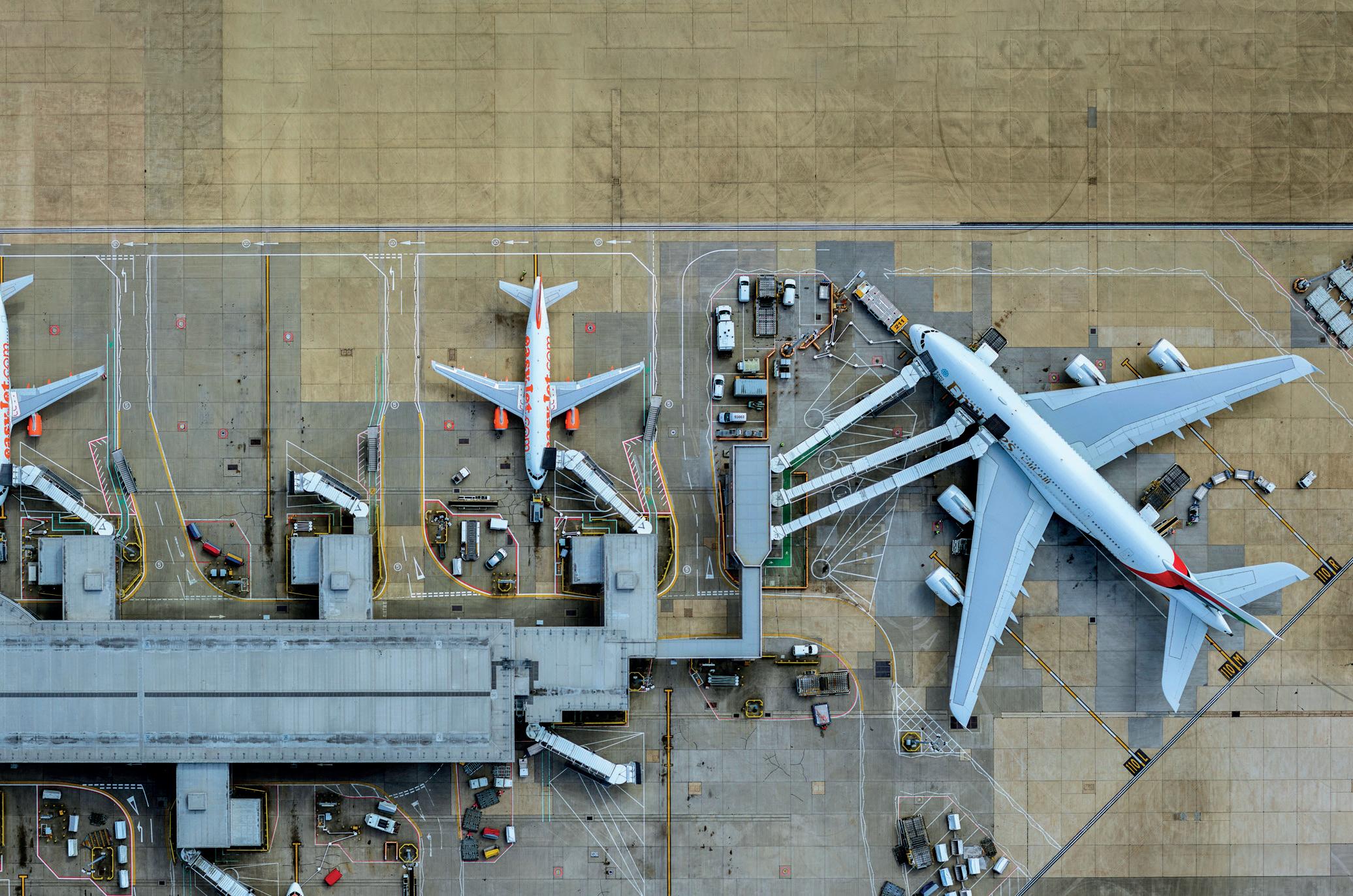SUSTAINABILITY
Flood warning!
NACO’s Vivek Sindhamani and Peter Vorage discuss the growing threat of flooding to airports and how some major hubs are planning ahead to increase their resilience to rising water levels.
D
uring the past five years, over twenty major, and many more small-island airports, have flooded due to extreme rainfall events or storm surges in combination with a rise in sea levels. The list includes Chennai International Airport in India in 2015; Japan’s Kansai International Airport as a result of Typhoon Jebi in 2018; Cochin Airport in India which was left partly submerged after severe rainfall in Kerala in 2019; and Grand Bahama International Airport in the Bahamas, closed in the wake of Hurricane Dorian the same year. These events are just the tip of the (melting) iceberg as the United Nations Intergovernmental Panel on Climate Change (IPCC) has predicted a continued increase in sea levels and occurrences of erratic rainfall events. Many ACI member-airports were constructed in coastal or river floodplain areas since these were the only large, flat surfaces available for safe aircraft operations. This situation has become increasingly critical due to increased urbanisation in these airports’ surrounding areas. This in turn has reduced natural water buffering putting airport flood resilience under further pressure. As a result, airports are now uniquely vulnerable to the increasing effects of climate change, and to flooding in particular.
Disruption to airport operations In 2011, extreme rainfall caused Bangkok’s main river to flood a large part of the city, including Don Mueang International Airport (pictured above). The resulting effects were so severe that it took a year to carry out the extensive repair work required and replace damaged electrical and IT systems. During this period, all flights had to be diverted to Bangkok Suvarnabhumi. This is a prime example of what the finance and insurance sector term the physical risk of climate change.
Other examples may be found following the aftermath of hurricanes such as Katrina in New Orleans and Sandy in New York in 2012, where flooding at regional airports meant that disaster relief teams had to use alternative airports and travel by road to reach disaster-hit areas. You might think that the enormous potential cost and operational disruption would lead authorities to ensure their airports are well defended. Sadly, in our experience, this is not the case. Today, the average airport is built on legacy infrastructure with gradual expansion cycles. In most cases, drainage systems were not designed to cope with the increase in extreme rainfall intensities that have occurred and are expected to continue, so the threat of extreme weather events poses a very real concern. The United Arab Emirates, for instance, has swiftly refocused its attention on the potential of flooding after the downpour and floods of 2019. The situation becomes more acute when the airport is located in a heavily urbanised area, floodplain or reclaimed land.
Societal disruption The closure of any airport can have a considerable economic, operational and, indeed, reputational impact on the city, region and even country it serves as when an international airport is inaccessible, the country it is located in along with its services are similarly affected. While a storm may pass within a few hours, it can take several weeks, months or longer to rebuild damaged infrastructure and resume normal operations. And in cases like these, it is not just reputations that are at risk, but business itself. Talking to The Guardian newspaper in October 2019, former Bank of England governor, Mark Carney, noted that “Firms ignoring climate
AIRPORT WORLD/ISSUE 1, 2020
45















